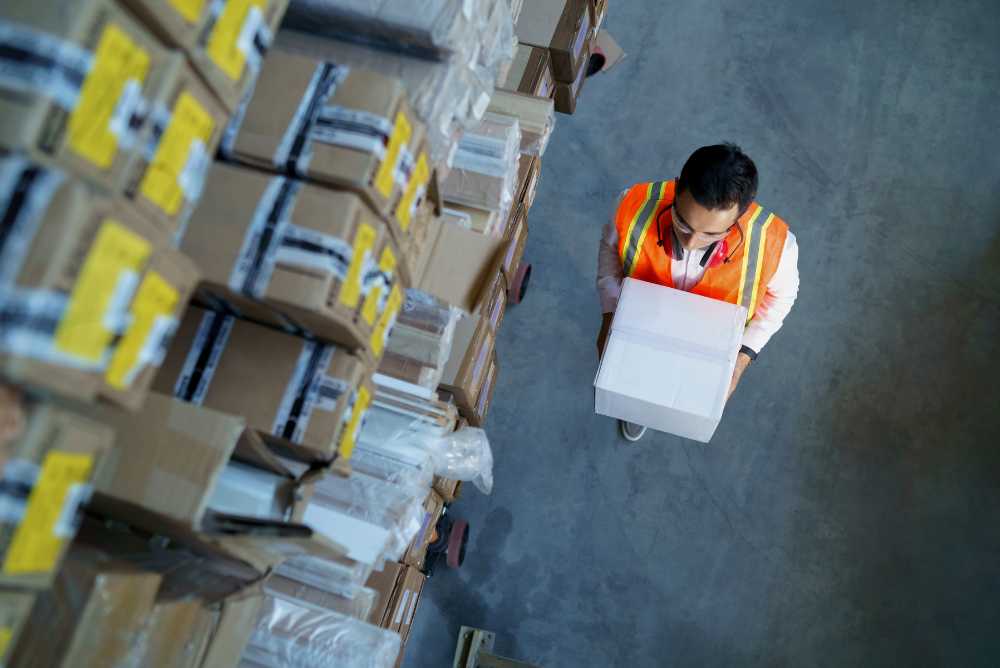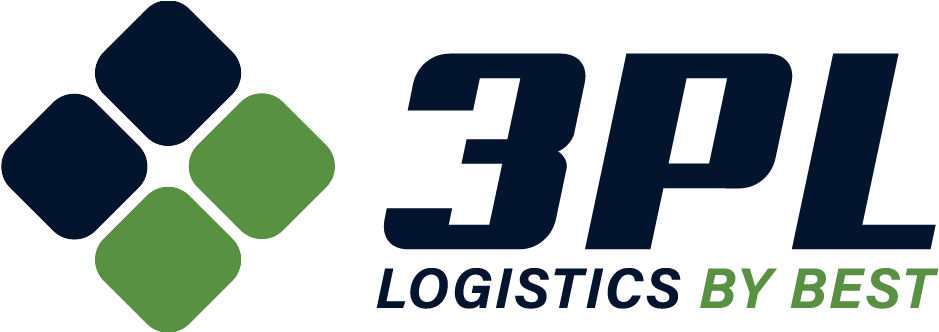In modern business, logistics ensure smooth operations and satisfy customer expectations in a supply chain. However, managing supply chains, warehousing, and deliveries becomes increasingly challenging as businesses grow. For many companies, outsourcing logistics to a 3rd party logistics (3PL) provider can be a game-changer.
Key Takeaways
✔ When demand outpaces logistics capabilities, such as frequent stockouts and missed delivery deadlines, a 3PL provider offers scalable solutions to handle fluctuating volumes efficiently.
✔ Frequent mistakes in order processing or delayed shipments damage customer trust. A 3PL can reduce these errors through automation and streamlined workflows.
✔ Logistical inefficiencies lead to team burnout, reduced efficiency, and stalled innovation. Partnering with a 3PL allows in-house teams to focus on strategic initiatives while routine tasks are outsourced.
✔ High shipping expenses, caused by poor route planning or underutilized capacity, hurt margins. A 3PL leverages bulk discounts and optimized routes to reduce costs.
✔ Overcrowded or insufficient storage hampers operations and expansion. A 3PL provides scalable warehousing with advanced inventory management systems to support growth.
✔ Inefficient reverse logistics, including refund delays and tracking issues, erode customer satisfaction. A 3PL simplifies returns with automated systems and efficient workflows.
✔ Late deliveries, damaged goods, and poor communication result in bad reviews. A 3PL enhances service quality with timely deliveries, professional handling, and proactive updates to rebuild trust.
Why 3rd Party Logistics is Important in Modern Businesses
Businesses today face intense competition. To stay ahead, companies must focus on their core competencies and leave logistical complexities to experts. This is where 3rd party logistics providers step in, offering specialized support that drives efficiency and scalability.
The growing reliance on 3PL services reflects their importance in modern business. In the United States alone, the 3PL market is projected to grow at an annual rate of 9.2% from 2024 to 2030.
3PL services offer the following benefits to businesses:
- Transportation Management: Ensuring goods are moved efficiently between locations. 3PL providers leverage advanced route optimization and a network of reliable carriers to minimize transit times and reduce shipping costs.
- Warehousing and Storage: Offering secure, scalable storage solutions, these facilities are often equipped with climate control and specialized storage areas to accommodate diverse inventory needs, including perishable goods or fragile items.
- Inventory Management: Utilizing advanced systems to track and manage stock. Real-time tracking tools allow businesses to maintain optimal stock levels, reducing the risks of overstocking or stockouts while improving demand forecasting.
- Order Fulfillment: Ensuring accurate and timely delivery to customers. 3PL providers utilize automated systems to improve picking and packing accuracy, enhancing customer satisfaction through faster and error-free deliveries.
- Reverse Logistics: Streamlining the return and exchange process. By implementing efficient return workflows, 3PLs help businesses recover value from returned goods and minimize waste through sustainable disposal or refurbishment practices.
7 Signs It’s Time to Partner With a 3rd Party Logistics Provider
1. Growing Demand Is Outpacing Your Current Capabilities
As businesses scale, increasing order volumes can create logistical challenges. When systems designed for smaller operations are pushed beyond their limits, inefficiencies emerge, leading to customer dissatisfaction and lost revenue. Signs that indicate logistics cannot keep up with demand include:
- Frequent Stockouts: These occur when demand exceeds inventory levels, leaving customers frustrated and competitors ready to fill the gap. Stockouts often lead to lost sales and eroded brand trust.
- Missed Delivery Deadlines: Late deliveries not only result in disappointed customers but also disrupt supply chain partnerships. Reliable delivery is a cornerstone of customer satisfaction.
- Limited Scalability: Traditional logistics systems often lack the flexibility to handle sudden spikes in demand, such as seasonal sales events or promotional campaigns.
How a 3PL Helps
A 3rd party logistics provider brings scalable infrastructure and adaptive processes to handle fluctuating demand. Services such as demand forecasting, inventory allocation, and optimized distribution ensure seamless operations even during peak periods.
- Flexible Warehousing: With access to expansive warehouse networks, businesses can store more inventory during high-demand seasons without the cost of permanent expansion.
- Efficient Order Processing: 3PL providers use advanced fulfillment systems that process orders faster and with greater accuracy, reducing delays.
- Integrated Technology: Predictive analytics tools offered by 3PLs help businesses anticipate demand, ensuring adequate inventory levels and timely restocking.
2. Frequent Fulfillment Errors Are Hurting Your Reputation
Fulfillment errors directly affect customer trust and brand reputation. Whether it’s shipping the wrong product, delays in delivery, or receiving damaged goods, these issues can quickly tarnish a business’s image. Fulfillment errors often stem from:
- Outdated Systems: Manual or disjointed processes increase the likelihood of mistakes, such as incorrect order picking or inaccurate inventory counts.
- Overworked Staff: When employees are overburdened, errors are inevitable, impacting customer satisfaction.
- Inefficient Workflows: Poorly structured processes can lead to bottlenecks and missed quality checks.
How a 3PL Helps
Partnering with a 3rd party logistics provider can eliminate these inefficiencies through automation and expert oversight.
- Automated Accuracy Checks: 3PL providers utilize barcode scanning, RFID tracking, and automated sorting systems to ensure order accuracy.
- Real-time Inventory Visibility: With cutting-edge systems, businesses can track stock levels and shipments, which reduces errors in inventory management.
- Error-proof Workflows: Experienced 3PL providers design streamlined processes that reduce delays and eliminate mistakes.
3. Overworked Teams Are Struggling to Keep Up
Logistical inefficiencies can lead to overburdened teams, impacting morale and productivity. Signs that logistics teams are struggling include:
- High Turnover Rates: Stress and dissatisfaction drive employees to seek other opportunities, making it difficult to maintain a cohesive and experienced team.
- Decreased Efficiency: Errors and delays become more frequent as employees struggle to manage increasing workloads, creating a cycle of inefficiency.
- Stalled Innovation: With teams focused solely on logistical challenges, there’s little time for process improvement or strategic growth initiatives, which can lead to stagnation in other business areas.
How a 3PL Helps
A 3rd party logistics provider lightens the load by taking over operational tasks, enabling internal teams to focus on higher-value activities.
- Outsourcing Time-consuming Tasks: From inventory management to reverse logistics, 3PL providers handle routine activities that otherwise strain in-house resources, allowing businesses to redirect resources to core competencies.
- Enhancing Morale: By reducing workloads, employees can work more efficiently and contribute to broader business goals, leading to higher job satisfaction and retention.
- Specialized Expertise: 3PL providers offer dedicated teams with logistics experience, ensuring tasks are completed with precision and care while minimizing costly mistakes.
4. Rising Shipping Costs Are Cutting Into Profits
Shipping expenses often account for a significant portion of a business’s operational costs. Inefficient practices, such as poor route planning or underutilized shipping capacity, exacerbate this issue. Signs include:
- Shrinking Profit Margins: Rising logistics costs reduce overall profitability, leaving businesses with limited room to reinvest in growth or innovation.
- Unpredictable Expenses: Variable shipping rates and surcharges create financial instability, making it difficult to forecast costs accurately.
- Customer Pushback: High shipping fees may lead to cart abandonment or reduced order volumes, particularly in competitive industries like e-commerce.
How a 3PL Helps
A 3rd party logistics provider mitigates these challenges by leveraging scale and expertise:
- Bulk Shipping Discounts: By consolidating shipments from multiple clients, some 3PL providers secure lower rates from carriers, translating to more predictable and affordable logistics expenses.
- Route Optimization: Advanced route-planning tools ensure faster and more cost-effective deliveries, helping businesses meet delivery promises without overspending.
- Freight Management: 3PLs handle carrier negotiations and compliance, freeing businesses from these complex tasks and allowing them to focus on enhancing their customer experience.
5. Limited Warehouse Space Is Hindering Growth
As inventory levels grow, insufficient warehouse space can disrupt operations and limit scalability. Challenges associated with limited storage include:
- Disorganized Inventory: Overcrowded warehouses make it difficult to locate and manage stock efficiently, leading to increased labor costs and slower order fulfillment.
- Delayed Order Processing: Poor inventory organization leads to longer picking and packing times, frustrating customers and hindering operational efficiency.
- Inhibited Expansion: Businesses unable to accommodate more products risk losing market opportunities, especially when entering new markets or launching new product lines.
How a 3PL Helps
Partnering with a 3rd party logistics provider offers immediate access to state-of-the-art facilities and scalable storage options.
- Strategically Located Warehouses: Reduce delivery times by storing products closer to target markets, improving shipping efficiency and customer satisfaction.
- Scalable Storage Solutions: 3PLs provide additional capacity during high-demand periods, ensuring smooth operations and eliminating the need for costly infrastructure investments.
- Inventory Management Systems: Advanced technology helps optimize stock levels, reducing overstocking or understocking risks while maintaining accurate inventory data for better decision-making.
6. Customer Returns Are Becoming Unmanageable
Product returns can create logistical chaos, especially when processes are inefficient or unscalable. Common challenges include:
- Refund Delays: Slow processing frustrates customers and erodes trust, increasing the likelihood of negative reviews or lost repeat business.
- High Handling Costs: Reverse logistics can be expensive without efficient systems, cutting into profit margins and operational budgets.
- Tracking Issues: Lack of visibility into returns hampers inventory management and analytics, making it harder to identify trends or improve product quality.
How a 3PL Helps
A 3rd party logistics provider streamlines reverse logistics, ensuring an efficient and cost-effective returns process:
- Automated Return Tracking: Businesses can monitor returns in real time, enabling better stock replenishment and analysis to minimize future issues.
- Customer-friendly Policies: Smooth returns processes enhance customer satisfaction and loyalty by providing a hassle-free experience, even in situations involving complex product exchanges.
7. Negative Reviews Are Impacting Your Business
Customer dissatisfaction stemming from logistical issues often translates into negative reviews, harming brand reputation and sales. Common triggers include:
- Late Deliveries: Delayed shipments disappoint customers and reduce repeat business, particularly in industries where on-time delivery is crucial.
- Damaged Goods: Poor handling during transportation reflects negatively on the business and results in costly replacements or refunds.
- Lack of Communication: Unclear tracking and updates frustrate customers, leaving them feeling uninformed and undervalued.
How a 3PL Helps
By partnering with a 3rd party logistics provider, businesses can address these pain points.
- Timely Deliveries: Reliable 3PL services ensure shipments arrive on time, improving customer satisfaction and helping businesses build long-term trust with their audience.
- Professional Handling: Specialized teams and equipment minimize the risk of product damage, ensuring that goods arrive in perfect condition.
- Enhanced Communication: Real-time tracking and proactive updates keep customers informed throughout the process, reducing anxiety and boosting confidence in the brand.

How to Choose the Right 3rd Party Logistics Provider
Choosing the right 3rd party logistics partner in NJ is a pivotal decision that can significantly impact the efficiency and success of a supply chain. Here are effective tips to make an informed decision:
1. Assess Your Business Needs
- Identify Pain Points: Begin by outlining specific challenges the business faces, such as inefficient inventory management, frequent shipping delays, or difficulties handling peak season demand. Knowing where operations struggle will help businesses find a 3PL that can address those issues effectively.
- Determine Service Requirements: Understand the scale of support needed—whether it’s warehousing, order fulfillment, reverse logistics, or end-to-end supply chain management. A clear definition of needs ensures the provider offers the right services without unnecessary extras.
- Anticipate Future Growth: Consider not only current requirements but also anticipated growth trajectory. Choose a provider capable of scaling their services to support the business’ expanding operations.
2. Evaluate Provider Capabilities
- Service Offerings and Specialization: Look for a provider that excels in the specific logistics services specific business needs. For example, if the business handles perishable goods, ensure the 3PL has expertise in cold storage and temperature-controlled transportation.
- Assess Physical and Technological Infrastructure: These include the number of warehouses, transportation networks, and automation systems. A robust infrastructure is critical for seamless operations.
- Industry Expertise: Choose a provider with experience in the business’ industry. A partner familiar with the market can better navigate unique challenges and regulations, such as those in e-commerce, retail, or manufacturing.
3. Check Technology Integration
- Advanced Tools: Ensure the provider uses up-to-date systems like real-time tracking, predictive analytics, and automated inventory management tools. These technologies improve efficiency and provide valuable insights into supply chain performance.
- Software Compatibility: Verify that the provider’s systems can integrate smoothly with the business’ existing platforms, such as enterprise resource planning (ERP) software or customer relationship management (CRM) tools. Integration minimizes disruptions and enhances collaboration.
- Data Security: Confirm the provider has robust cybersecurity measures to protect sensitive data, including customer information and operational details.
4. Consider Location Advantages
- Proximity to Key Markets: Choose a provider with strategically located warehouses and distribution centers near the business’ primary customer base. This reduces delivery times and shipping costs while improving customer satisfaction.
- Global Reach: If the business operates internationally, select a 3PL with a strong global network and expertise in cross-border logistics. They should be familiar with international shipping regulations, customs clearance, and documentation.
- Last-Mile Delivery Efficiency: Evaluate the provider’s ability to handle last-mile delivery effectively, particularly if the business serves urban areas with high customer density.
5. Review Customer Feedback
- Reliability and Responsiveness: Analyze reviews, testimonials, and case studies to understand how the provider handles challenges, such as delays or operational disruptions. Consistent positive feedback indicates dependability.
- Service Quality: Look for evidence of the provider’s commitment to quality, including on-time deliveries, accurate order fulfillment, and responsive customer support.
- Reputation in the Industry: Seek out references from other businesses in the sector or industry associations to validate the provider’s performance and reputation.
6. Test for Compatibility
- Alignment with Business Goals: Ensure the provider understands the business’ short-term objectives and long-term vision. Their services and strategies should align with the overall business goals.
- Communication and Collaboration: Evaluate how well the provider communicates during initial discussions. Transparent, proactive communication is essential for a strong working relationship.
- Cultural Fit: Choose a provider that shares the company’s values and customer-centric approach. Compatibility in working styles fosters a smoother partnership and mutual trust.
- Flexibility and Adaptability: Assess whether the provider can adapt to unforeseen challenges, such as supply chain disruptions or sudden changes in demand. A responsive partner is invaluable in maintaining continuity.
Frequently Asked Questions
What is the difference between 3PL and 4PL?
A 3rd party logistics (3PL) provider offers services such as transportation, warehousing, and inventory management to support specific parts of the supply chain. A 4th party logistics (4PL) provider, on the other hand, manages the entire supply chain, coordinating multiple 3PLs and integrating technologies for a complete solution. While 3PL focuses on operational support, 4PL provides strategic oversight and management.
How does a 3PL provider handle seasonal demand fluctuations?
3PL providers offer flexible warehousing space and transportation resources to accommodate increased demand during peak seasons. They use advanced inventory management systems to ensure products are stocked and ready to ship when needed. This helps businesses meet customer expectations without overextending internal resources.
What industries benefit most from 3rd party logistics services?
Industries such as retail, e-commerce, manufacturing, and healthcare gain the most from 3PL services. These sectors often require efficient supply chain management to handle complex needs like bulk inventory storage, global shipping, and time-sensitive deliveries. A 3PL’s expertise ensures these challenges are met with precision and efficiency.
Can small businesses benefit from partnering with a 3PL provider?
Small businesses can access cost-effective logistics solutions and advanced technology by partnering with a 3PL provider. This allows them to scale operations without the need for heavy capital investment in infrastructure or systems. It also helps improve customer satisfaction with faster, more reliable deliveries.
What are the potential risks of outsourcing to a 3PL provider?
Outsourcing to a 3PL can lead to reduced control over the logistics process and dependency on the provider’s performance. Data security and communication issues may also arise if proper protocols are not in place. These risks can be mitigated by conducting thorough research, setting clear expectations, and establishing strong communication channels.
Streamline Your Supply Chain with 3PL Logistics by Best!
If your business is facing logistical challenges, now is the perfect time to partner with 3PL Logistics by Best, a trusted name in supply chain solutions located in New Jersey. With extensive experience in warehousing, transportation, and reverse logistics, 3PL Logistics by Best is equipped to handle all your operational needs, ensuring efficiency and reliability. As a leading provider in NJ, we specialize in optimizing your logistics to help your business thrive.
Ready to take your logistics to the next level? Contact 3PL Logistics by Best today and let our team deliver customized solutions that drive your business forward!

